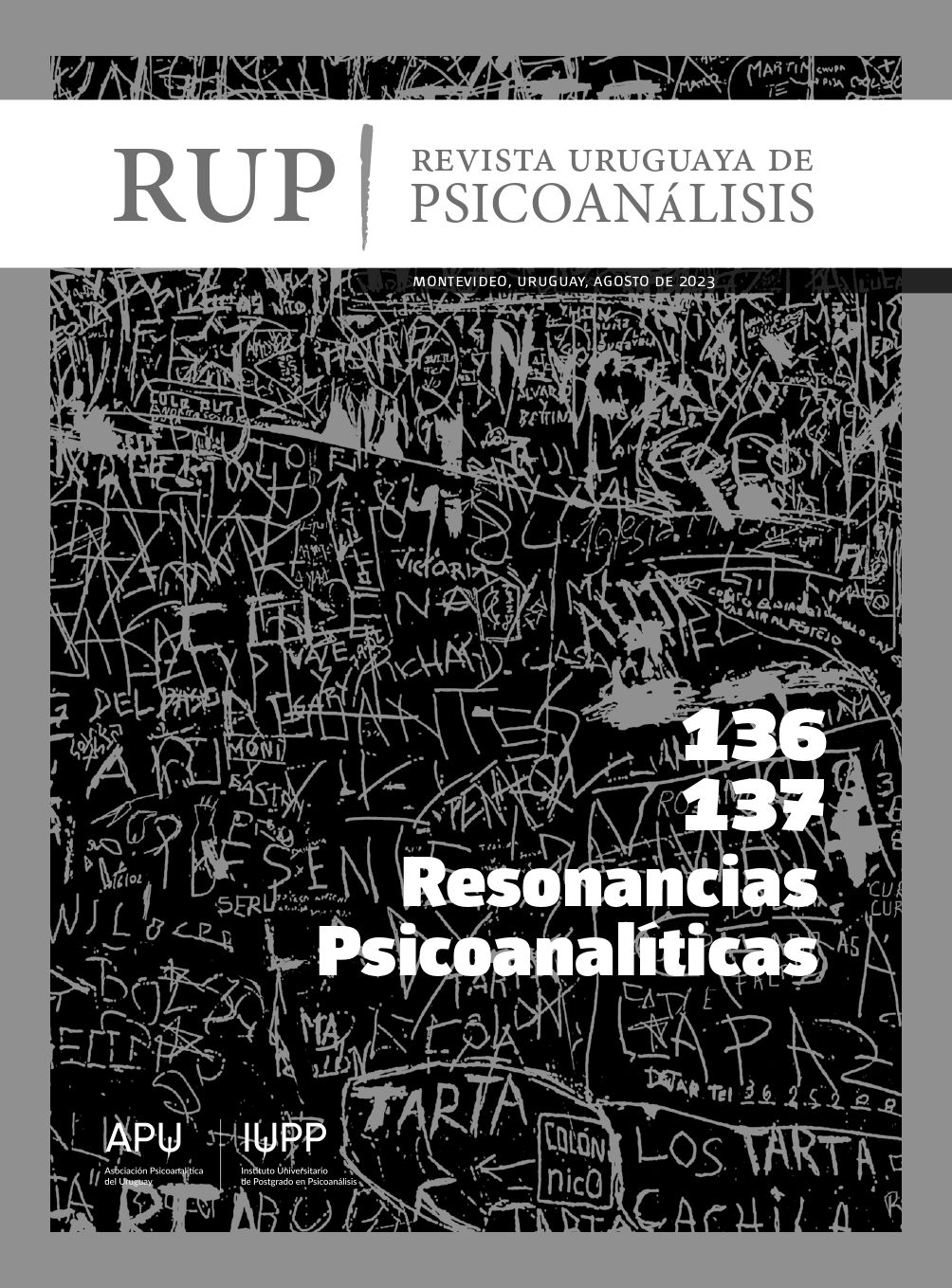Strokes from the body to the paper. The creation of the drawing of the human figure in the child
DOI:
https://doi.org/10.36496//n136-137.a9Keywords:
Inscription, Body ego, Mirror phase, Psychic structure, Psychoanalytic technique in child, Drawings, Clinical materialAbstract
The achievement of the human figure in the child will involve what we will call a significant montage of writings, the assembly of an
erogenous body, writing marked by loss traversed by the signifier.
In the desiring circulation, the other/Other will impress marks, primordial registers that will shape the psyche. In this creative
act, the child re-creates the lack from which they started and will account for the writing journeys of their body. We will posit this
as a leap from the mirror to the paper. And the wonder present in the ability to find, once again, a unified imaginary and symbolic
representation of their body. This leap will be sustained by the amazed and joyful response of the adult, who names, validates, and
certifies the unity of the image created. This refers to the inscription of the human in its symbolic character.
Downloads
References
Casas de Pereda, M. (2015). Estructuración psíquica.Revista Uruguaya de Psicoanálisis, 120, 24-38.
Chemama, R. y Vandermersch, B. (2004). Diccionario del psicoanálisis. Amorrortu.
Dolto, F. (1986). La imagen inconsciente del cuerpo. Paidós.
Freud, S. (1996a). Formulaciones sobre los dos principios del acaecer psíquico. En J. L. Etcheverry (trad.), Obras completas (vol. 12, pp.
-232). Amorrortu. (Trabajo original publicado en 1911).
Freud, S. (1996b). La interpretación de los sueños. En J. L. Etcheverry (trad.), Obras completas (vol. 4).Amorrortu. (Trabajo original publicado en 1900 [1899]).
Freud, S. (1996c). La represión. En J. L. Etcheverry(trad.), Obras completas (vol. 14, pp. 135-152).Amorrortu. (Trabajo original publicado en 1915).
Freud, S. (1996d). Proyecto de psicología. En J. L. Etcheverry (trad.), Obras completas (vol. 1, pp.323-446). Amorrortu. (Trabajo original publicado en 1950 [1895]).
García, J. (2019). Coreo-grafías inconscientes. Revista Uruguaya de Psicoanálisis, 129, 13-29.
Gil, D. (2011). Errancias: Freud y Lacan en los pagos de San José de Mayo. Trilce.
Haag, G. (2004). Sexualidad y Yo corporal. Topique 87.
Imbriano, A. H. (2 de octubre de 2008). El goce es la satisfacción de la pulsión. elSigma. https://www.elsigma.com/colaboraciones/el-goce-esla-satisfaccion-de-la-pulsion/11796
Lacan, J. (2003). El seminario de Jacques Lacan, libro 7: La ética del psicoanálisis. Paidós. (Trabajo original publicado en 1959-1960).
Lacan, J. (2005). El seminario de Jacques Lacan,libro 11: Los cuatro conceptos fundamentales del psicoanálisis. Paidós. (Trabajo original
publicado en 1964).
Nasio, J. D. (2008). Mi cuerpo y sus imágenes. Paidós.
Rodulfo, R. (2015). Dibujos fuera del papel: De la caricia a la lecto-escritura. Paidós. (Trabajo original publicado en 1999).
Soler, C. (1994). El cuerpo en la enseñanza de Lacan.
En V. Gorali (comp.), Estudios de psicosomática (vol. 1, pp. 93-114). Atuel. (Trabajo original publicado en 1987).
Spitz, R. (1972). El primer año de vida del niño: Génesis de las primeras relaciones objetales. Aguilar.
Uribe, N. (2013). Concepciones psicoanalíticas del dibujo en la clínica del niño. Affectio Societatis,10(19), 48-59.
Downloads
Published
Issue
Section
License
Copyright (c) 2023 Revista Uruguaya de Psicoanálisis

This work is licensed under a Creative Commons Attribution 4.0 International License.


 This work is licensed under a
This work is licensed under a 